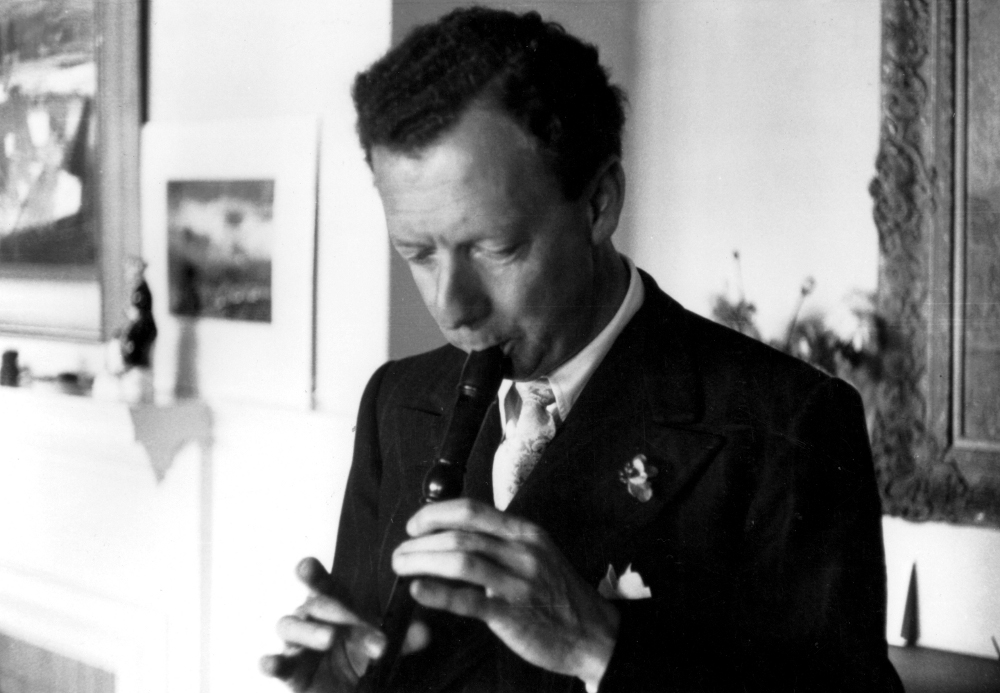Benjamin Britten (1913-1976) was President of the Society of Recorder Players from 1958 to 1976.
He was a fine player of the piano and viola. It is perhaps less well-known that he also played the recorder, being persuaded to learn by friend and collaborator Imogen Holst(1907-1984), daughter of composer Gustav Holst.

His Scherzo for four recorders (descant, treble, tenor and bass) was written in 1954. A second tenor part is provided in case there is no bass available. It was included in the series “Music for Recorders”, edited by Britten and Imogen Holst, and published by Boosey and Hawkes from 1954 to 1959. The piece is dedicated “To the Aldeburgh Music Club”. This club, founded by Britten and Peter Pears in 1952, originally consisted of a recorder group, in which both played, a string group and a choir.
Also in the series “Music for Recorders” was his Alpine Suite for recorder trio (two descants and treble), composed during a skiing holiday in Zermatt, during February 1955. One of the party, the artist and recorder player Mary Potter, had been injured on the first day and the suite was composed to give her something to practise during her recuperation.
Britten also used recorders in two of his operas: “Noye’s Fludde”(1957) and “A Midsummer Night’s Dream”(1960). The opera “Gloriana”(1953) does not use recorders, but two of the dances from Gloriana exist in recorder versions due to Imogen Holst. The March was arranged for a single descant recorder, and the Morris Dance for two descants.
The above pieces are all on a CD by the Flautadors, “Rubbra and Britten, The complete recorder works”, issued in 2004.

